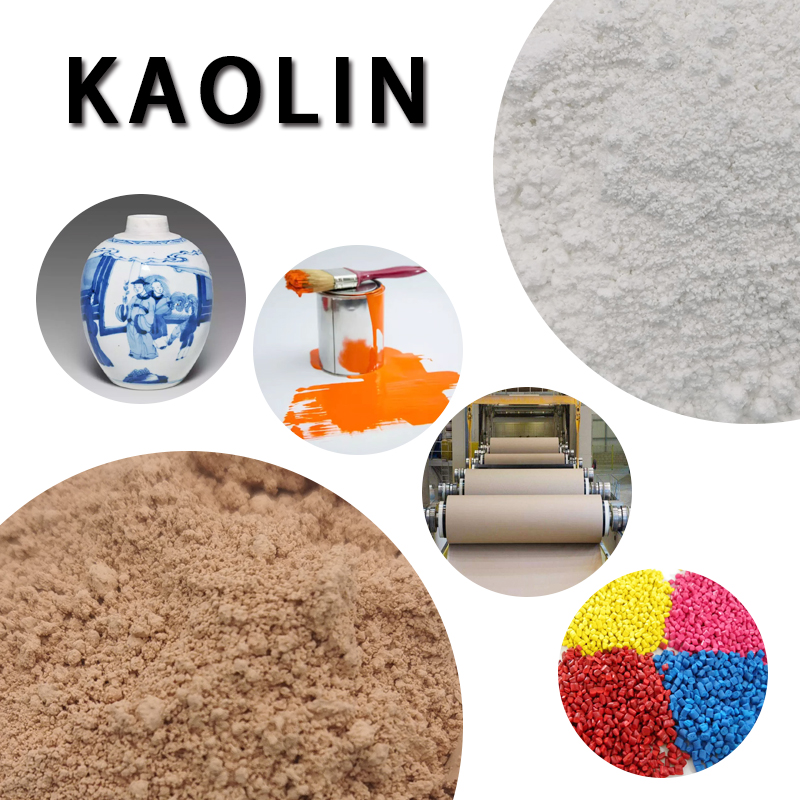Kaolin is a non-metallic mineral, which is a kind of clay and clay rock mainly composed of Kaolinite group clay minerals. Due to its white and delicate appearance, it is also known as Baiyun soil. It is named after Gaoling Village in Jingdezhen, Jiangxi Province.
Its pure kaolin is white, delicate and Mollisol like, with good plasticity, fire resistance and other physical and chemical properties. Its mineral composition is mainly composed of Kaolinite, halloysite, hydromica, Illite, Montmorillonite, quartz, feldspar and other minerals. Kaolin is widely used in papermaking, ceramics, and refractory materials, followed by coatings, rubber fillers, enamel glazes, and white cement raw materials. A small amount is used in plastic, paint, pigments, grinding wheels, pencils, daily cosmetics, soap, pesticides, pharmaceuticals, textiles, petroleum, chemical, building materials, national defense, and other industrial sectors.
Kaolin minerals are composed of Kaolinite, dickite, pearl stone, halloysite and other Kaolinite cluster minerals, and the main mineral component is Kaolinite.
The Crystal chemistry formula of Kaolinite is 2SiO2 ● Al2O3 ● 2H2O, and its Theoretical chemistry composition is 46.54% SiO2, 39.5% Al2O3, 13.96% H2O. Kaolin minerals belong to 1:1 type layered silicate, and the crystal is mainly composed of silica tetrahedron and alumina Octahedron. The silica tetrahedron is connected along the two-dimensional direction by sharing the vertex angle to form a hexagonal grid layer, and the peak oxygen not shared by each silica tetrahedron faces one side; The 1:1 type unit layer is composed of silicon oxide tetrahedron layer and aluminum oxide Octahedron layer, which share the tip oxygen of silicon oxide tetrahedron layer.
Post time: Aug-02-2023


